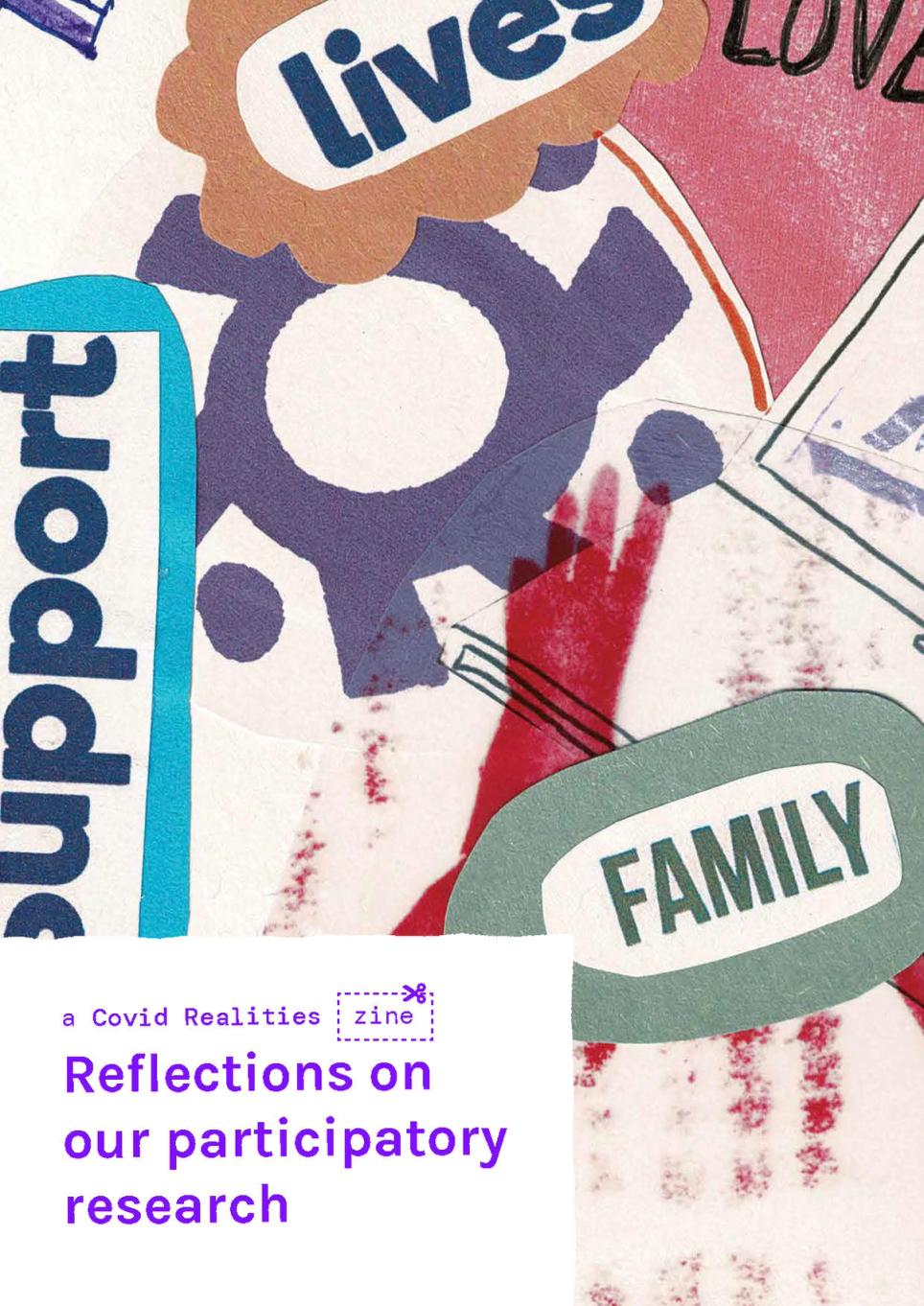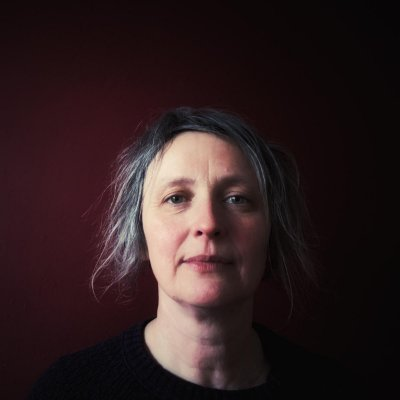


Jean McEwan
ArtistUnpacking the process: making our Covid Realities ‘Reflections’ zine
24 Dec, 2022What we wanted to do with this zine
Reflections on our Participatory Research is a collective zine made with Covid Realities participants, researchers and close colleagues about the methods and approaches we used to work together between 2020 - 2022
To develop the zine, we held a series of online workshops earlier in the year where participants, researchers and close colleagues came together to reflect on the approach we took in working together, and to think about what we wanted to share. The workshops, and the zine, offered a space for everyone involved in the project to come together and think about the methods and approaches we have taken during the project; and to express these creatively by making collage artwork to go in the zine.
My role was to support the making of the zine throughout the process; from designing and sending out packs of art materials to people, leading the facilitation of the online sessions; scanning and collating the collages to create a draft zine, facilitating discussions and feedback about how people wanted the final zine to be, and then putting the final version together.
This was a great opportunity to work with Covid Realities participants again a year on , after having supported the making of a previous collective zine with them in 2021 - It’s Our Story: Families’ Lived experience during the Pandemic
Having an established relationship with the participants, and the experience of making a zine together before, really helped create the right kind of space, trust and confidence to make our Reflections zine together.
This zine was different in that it also involved researchers and close colleagues (Child Poverty Action Group, as well as some of our creative collaborators) as participants, with the aim of creating a space for everyone to come together on an equal footing, and because the participants were experienced in zine making and working creatively, many were more confident than some of the research team and colleagues in the creative process.
Collaborating together
As always with Covid Realities this was very much a collaborative process from beginning to end.
I worked with Uisce Jordan, a member of the research team, who helped with corresponding with participants and team, inputted into the sessions and was a general support and sounding board throughout. In designing the creative packs, I worked with fellow artist Catherine Cartwright (https://catherinecartwright.co.uk/) who contributed materials (the lovely drawings and prints you see in the zine of hands and leaves are hers).
With this zine, we had in mind a different kind of aesthetic to make it distinctive; using a softer colour palette, and images that suggested growth and connection, which were key experiences for people in the project. We also asked participants and the team in advance what images they would like included in the packs.
Catherine helped facilitate some of the online sessions with me alongside sound artist Ros Frazer. Tom Flannery, the Covid Realities web and graphic designer came in later to help bring the final zine together - more on this later!
During the online workshops, people were invited to make a collage, in response to the following questions:
- If you had to tell someone who had never been part of Covid Realities what we did and why, what would you say?
- What did you learn or enjoy?
- What could be different or better if we did it again?
Catherine, Ros and I facilitated small Zoom breakout rooms of 3 or 4 people to give people space to make and connect with one another comfortably. For some people, this was a space to talk, for others, quiet reflection and creativity. People were encouraged to do what worked best for them.
Bringing the zine together
After the workshops, people posted their artwork to us via Teresa Frank, the fantastic admin support person at the University of York, who sent them on to me. I then scanned the images and put together a first draft - this was sent to everyone, and we had a second workshop to make collective decisions together about the final zine.
Sharing a (rather unwieldy) first draft, I really noticed an increase in confidence from participants, who were very clear about how they wanted the zine to be - and gave detailed feedback on everything from design, sequence and wording, and shared thoughts and ideas about things that were missing and needed to be included, eg the page of thank you’s at the end.
I went away with a significant and specific list of changes - exactly how the participatory process should work!
The next step brought some challenges - not least, including how to ensure the voices of 27 contributors were given equal space while not making the zine too busy.
I was lucky to be able to work closely with graphic and web designer Tom Flannery to figure it out. Tom’s design skills, and his understanding of zines meant that we were able to work out a careful balance of a visual framework which didn’t take away from the immediacy and vibrancy of the zine aesthetic.
Tom took aspects and visual elements from the zine materials and collages people made, e.g., graph paper, printed speech bubbles - and weaved these in to create a strong, cohesive design, which takes you through the story of the collective experiences of the people involved.
What I love about the zine is that the experiences from the project are expressed so visually, directly and authentically.
It feels like a collective conversation, which is exactly what it is.
Watch an animation here about Jean and Tom’s experiences of working on Covid Realities
Interested in finding out more about making zines with people?
Read our zine (un)guide here
Limited print copies of both zines are available. If you are interested in a print copy of either of them, email Jean at Jeanmariemcewan@gmail.com with a line about how/why it would be useful to you, your project, group or organisation.
